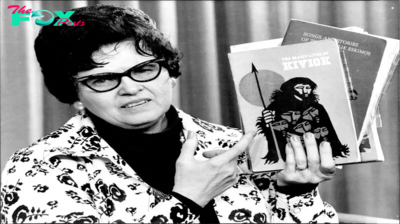History
The Black Caddies Who Helped Shape Pinehurst No. 2
On Thursday, the U.S. Open kicks off at the venerable Pinehurst No. 2 for the fourth time. The media coverage of the event will undoubtedly focus on past winners; the village of Pinehurst’s quaint New England style streets; and Donald Ross, the Scottish course architect who built the famed course. Acclaimed country singer Luke Combs, a North Carolina native, has voiced vignettes about the village for NBC’s coverage.
Yet the spotlight is unlikely to travel across Highway 211 to Taylortown, a historically Black community whose population has provided the backbone to golf in the region for over a century. If the media coverage excludes Taylortown, it will be a missed opportunity to recognize the crucial role skilled Black caddies have played in the game’s history. It will also be a lost chance to think critically about why Black golfers are vastly underrepresented in professional golf — especially at a course with such a rich Black golfing history.
In 1895, the land that will host the U.S. Open this week was unrecognizable. In the second half of the 19th century, the turpentine and lumber industries laid waste to one third of Moore County’s longleaf pines, leaving only tree stumps in their wake.
When James W. Tufts, a Massachusetts businessman who had amassed wealth by selling soda fountains, arrived in the North Carolina Sandhills that year, he could hardly have envisioned a future land of lush green fairways. He bought the land for one dollar per acre and began building a modern health resort. Tufts never intended to build a golf course and was dead before the sport became central to Pinehurst. For labor, he turned to local Black and white workers who had done much of the work of tapping and felling the trees in the preceding decades.
Likely among the workers who built Pinehurst was Demus Taylor. Born enslaved, Taylor found himself in Pinehurst after a long life of laboring. He gained his freedom after the Civil War. Taylor then attempted to achieve financial security through farming, then through the turpentine industry, and finally in lumber camps. But like hundreds of thousands of other formerly enslaved Black southerners, exploitative sharecropping and labor practices kept him from financial security.
With the construction of Pinehurst came jobs for local workers like Taylor.
Read More: The Long, Sordid History of Foreign Governments Courting Members of Congress
In 1898, at the behest of Golf-fanatical tourists, Tufts’s son Leonard spearheaded the creation of a first Golf course, Pinehurst No. 1. By 1901, the Golf craze that was sweeping the North became a core element of the Business for Southern resorts. With the Health resort failing financially and understanding that there was money in Golf, Leonard Tufts hired Donald Ross, a famed Scottish Golf course architect, to redesign the No. 1 course.
In 1907, Ross built the course that will host the U.S. Open this week, No. 2. Black men were an important part of the construction and maintenance crews which built these courses.
For the first third of the 20th century even duffers had caddies and at Pinehurst that meant a Black man or boy. White management likely turned to Black workers for caddie jobs because the occupation closely mirrored many other service roles fulfilled by African Americans, such as porters, attendants, and domestic servants. Caddying was seen as unskilled and entirely subservient, which in the minds of white Southerners at the time, made it a job for Black people. Black caddies also symbolized the structure of Jim Crow society, in which Black workers facilitated the leisure time of White people.
Taylor was reportedly one of the first caddies to work the fairways and greens of Pinehurst’s courses. In the 1900s and 1910s, he also owned and operated low-cost accommodations for caddies, and amassed the funds to purchase land just north of Pinehurst. With time he became the patriarch of a small settlement, home to the Black workers who serviced the resort and golf courses. Soon the town would take his name — Taylortown. Demus’ son ran the local school, and Black caddies made the town their home.
While caddying built a town, it did not build wealth. A 1922 survey revealed that among the white population of Pinehurst, the combination of personal wealth and real estate values came to a whopping $3,868,767 (over $70,000,000 today adjusted for inflation). By contrast, the total for the area’s Black community was a paltry $28,245 (roughly $500,000 today) — less than 0.01% of the white total.
As Black men in Taylortown and around the South took to caddying as a career, they became skilled at the job. In 1926, a member of management at Pinehurst boasted that based on his experiences playing across the country, the caddies at the club were “superior to those at any other places.” And legendary golfer Walter Hagen wrote in 1929 that “if one gets the idea that the colored caddie doesn’t know the game he is soon disabused. These boys know golf from A to Z, and they quickly learn all there is to learn about each player’s game.”
In many ways, as men who were reliant on caddying as a career – unlike white children in the North who caddied as a summer or weekend job until they were 18 — it was Black men who professionalized caddying and turned it from menial drudge work to a role that is seen today as highly skilled labor.
Black caddies in the South used their jobs as leverage to learn the game and become skilled players in their own right, playing when courses were closed for maintenance and building their own country clubs. In turn, it would be former caddies like Charlie Sifford — who grew up caddying just to the west in Charlotte — who became the players who forced the end of the PGA Tour’s Caucasian-only clause in 1961.
Pinehurst’s caddies never achieved the fame of their counterparts at another legendary Southern course: Augusta National. The Masters tournament at Augusta National showcased the value of knowledgeable local Black caddies annually until 1983, when the club finally allowed the pros to bring their own caddies to the tournament. But for most of the thousands of Black caddies working at resorts or country clubs across the South, caddying for presidents and professionals, as the Pinehurst and Augusta caddies did, was far from the norm.
With the adoption of the Golf cart and the departure of Black workers from formerly subservient jobs in the middle of the 20th century, the number of Black caddies plummeted. No longer did White Golfers see caddying as exclusively for Black men and boys — which was read as a sign of racial progress in the South.
Read More: How Antitrust Laws Could Kill the PGA-LIV Golf Merger
Unfortunately, the golf industry did not take the necessary steps to offer African Americans another route into the sport when caddying dried up. Expensive and exclusionary, golf maintained a reputation of whiteness and wealth that still exists today.
There were more Black golfers on the PGA Tour in the 1970s than there are today. After the cadre of former caddies retired from the tour, the generations of Black children and teens that followed lacked the affordable or consistent access to golf courses required to produce professional players.
This left the number of Black professionals at the upper echelons of the game remarkably small. At the turn of the century, it seemed that Tiger Woods’ rise to superstardom would produce an explosion in Black participation in golf. But the Tiger effect never really materialized. Last year, the men’s U.S. Open had no Black players. This week Woods and Willie Mack III are the only Black golfers who will play on fairways and greens where Black caddies knew every blade of grass for much of the 20th century.

In recent years, charities like the First Tee have made extensive efforts to bring golf into communities that have traditionally lacked access to the game. Meanwhile, Steph Curry’s new Underrated Golf Tour explicitly focuses on “balancing participation in the sport to truly reflect our society.” These efforts are important, but making golf more equitable is an uphill battle after decades of exclusion and neglect made the playing field highly uneven.
At Pinehurst, many of the course’s most storied Black caddies have passed away in recent years. Some of the more notable ones, like Willie McRae, Hardrock Robinson, and Fletcher Gaines are honored in the Pinehurst Caddie Hall of Fame. Recognizing and honoring the rich history of skilled Black involvement in golf on a broader scale could go some way to ushering in future of U.S. Opens that more wholly represent the diverse country for which the tournament is named.
Craig Gill holds a PhD in history from the University of North Carolina at Chapel Hill. His book Caddying on the Color Line, from which this piece is adapted, is forthcoming with Back Nine Press in 2025.
Made by History takes readers beyond the headlines with articles written and edited by professional historians. Learn more about Made by History at TIME here. Opinions expressed do not necessarily reflect the views of TIME editors.
-

 History1w ago
History1w agoThe Democratic Party Realignment That Empowered Trump
-

 History1w ago
History1w agoWhy People Should Stop Comparing the U.S. to Weimar Germany
-

 History1w ago
History1w agoFlorida’s History Shows That Crossing Voters on Abortion Has Consequences
-

 History1w ago
History1w agoThe 1994 Campaign that Anticipated Trump’s Immigration Stance
-

 History2w ago
History2w agoThe Kamala Harris ‘Opportunity Agenda for Black Men’ Might Be Good Politics, But History Reveals It Has Flaws
-

 History2w ago
History2w agoLegacies of Slavery Across the Americas Still Shape Our Politics
-

 History2w ago
History2w agoKamala Harris Is Dressing for the Presidency
-

 History2w ago
History2w agoWhat Melania Trump’s Decision to Speak Out on Abortion Says About the GOP



























